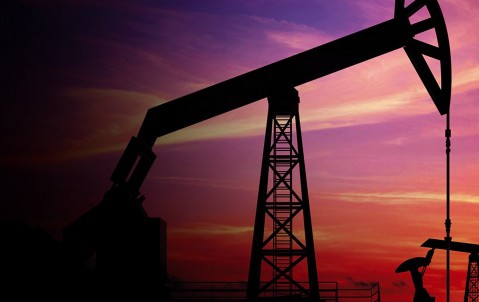
Plunging oil price challenges insurers
What impact is the oil price having on the energy insurance market?
The heady days of oil pushing more than $140 a barrel are now long past. In January 2016, oil crashed to a new low of $32, and some experts predict $20 per barrel is not impossible. For many, from large manufacturers to the humble motorist, the tumbling oil price is great news, but for the oil exploration and production companies, and the businesses that support them, it presents a real problem; forcing budget cuts, redundancies and even a growing number of bankruptcies. It’s a challenge too for the energy insurance market which has to contend with the associated reduction in premium volumes as some exposures reduce but also the increasing liability claims that can be a feature of a downturn.
Pouring oil on troubled waters
About 40 US energy companies filed for bankruptcy in 2015, and 2016 has seen no let up with Swift Energy Co the first in January to seek bankruptcy court protection. Part of the problem, says Phil Furlong, Energy Liability Line Underwriter for Hiscox London Market, is the high level of debt many of the mid-to-lower sized companies accrued when the oil price was much higher. “Production has been at a relatively high level for years. Exploration and production companies enjoyed big profits on the back of a buoyant oil price and had started to penetrate into areas that previously were considered too difficult or costly for oil production.” Those frontier areas, such as shale in the US, have however proved to be very expensive. “As a result of the slump in the oil price,” adds Furlong, “most of these guys [operating in frontier areas], who tend to be smaller operators, have downed tools and said it is just not economic enough to produce the oil.”
Even the larger operators have had to make cuts. “[Our] budgets were cut by 30% in 2015,” says Reed Wykes, Risk Manager for Hilcorp, one of the largest US privately held oil and natural gas exploration and production companies. “We achieved that by cost reduction, eliminating our exploration wells and keeping our development well drilling programme. We anticipate much of the same in 2016.”
The knock on effect
Cuts for exploration and production businesses are, in turn, bad news for the multitude of other industries, such as drilling contractors, well service contractors, and oil and gas construction companies that support them. “When the exploration and production companies slow down or stop, the work dries up for the support contractors. If we look at fleets of drilling rigs for example – offshore or onshore – the vast majority have at least 25% of the fleet laid up, with only a skeleton crew remaining on each unit. Service contractors are laying off swathes of their workforce – 25-30% at times, and people are taking pay cuts,” says Furlong.
“Our vendors and contractors are hurting,” adds Hilcorp’s Wykes, although he is careful to emphasise that companies like his recognise the importance of supporting its contractors for the longer term. “We actively seek to help our vendors grow more efficient. We offer ideas to help them cut costs and win. When they win, we win. We also pay our bills on time so that they do not become our bank. If they earn our business, they get paid in a timely fashion.”
Premium volumes fall
Less activity by both exploration and production companies and their service companies has had an inevitable downward effect on the energy insurance market. “We’ll look at areas like payroll and headcount when calculating liability exposures and those figures are drastically down for most of our energy clients,” comments Furlong. “That has an impact on the premium we charge, because the price of the policy needs to reflect the reduction in risk exposure as a consequence of reduced activity. This doesn’t mean that the rating environment is suffering - on lots of accounts we’re charging the same rates this year that we have charged for the previous few years – but that rate is typically applied to a much lower metric during the downturn.”
From the property insurance view, the effect is similar, adds Furlong. “If an oil rig was valued at $100 million three years ago, that figure reflected the earning capacity of the rig. But now its earning capacity is greatly reduced, that rig may be worth something nearer to $30 million. Hence the premium amount will be reduced.” On the buyers’ side, says Wykes, getting those values right in the downturn is just as important: “We make sure we have the right assets and exposures valued at the right limits. I have to find the balance in not transferring too much or too little risk to the insurance market.”
A moral hazard
Added to the falling insured values, there is also an increasing moral hazard for underwriters to contend with, says Furlong. “If you write, for example, employers’ liability for a drilling contractor, some of their employees, who have been earning solid money, are now being sent home due to a lack of work. Some of those individuals, accustomed to a nice lifestyle, might be tempted to file a claim for an injury which they would not have claimed for if work was abundant. We have already seen these types of claims coming through. In general, where there is unemployment there will always be more bodily injury claims.” There can also be a problem with laid-up equipment Furlong adds: “There can be a temptation to reduce maintenance budgets and compromise the longer-term integrity of the assets.”
“Given the challenging conditions, it has never been more important for insurers and energy companies alike to look to the longer term and work together”, says Furlong. “Increasingly the emphasis for us is on risk selection as opposed to purely on pricing, and to make sure that we’re continuing to partner with and support the right companies with the right assets and the right ethics, which are less sensitive to low commodity prices”
This view is echoed by Wykes. “Hilcorp has the best London underwriting partners I could ask for. I actively seek opportunities to educate them – and myself – so that my underwriters understand our risks as well as I do. My real goal is to have a large group of underwriters on our Hilcorp Risk Team who help me manage all of the enterprise’s exposures efficiently. I lean on their knowledge like they lean on mine to make this a cost effective programme. They should make money on our programme -- not gross amounts of money, but a stable profit.”
The cycle will turn
In the meantime, short memories shouldn’t disguise the inevitability of the oil cycle, concludes Wykes. “We have seen cycles similar to this before. 2015 hedges are rolling off and companies must live with their operational cash flow. We forget that it was just 16 years ago that oil was at $11 a barrel and we would have been doing backflips to see it at $40.” Furlong also adds a note of optimism: “Most economic commentators suggest that, at some stage the oil price must bounce back. Some economists are forecasting a notable rally in 2017 which would get much of the marginal industry back working again. In the meantime, the focus must be on providing our clients within the energy industry with the support they need to ensure a long term future. We want our clients to make it through and come out the other side punching.”



